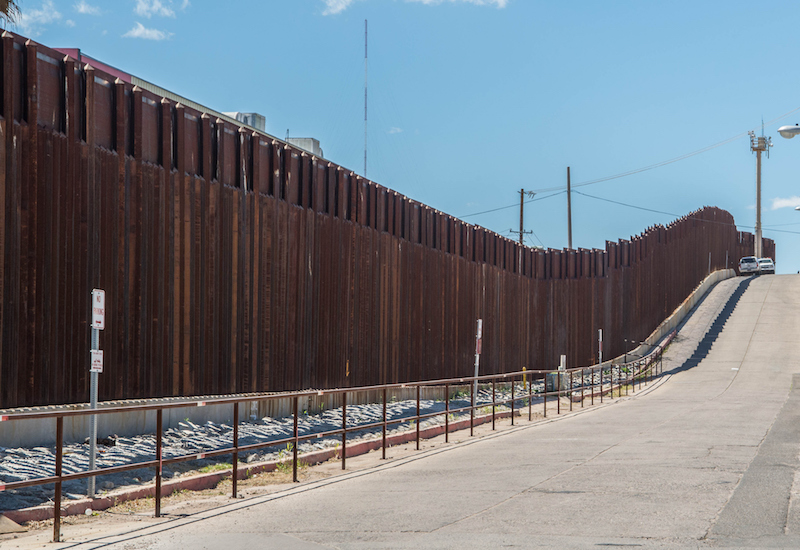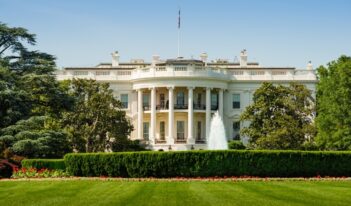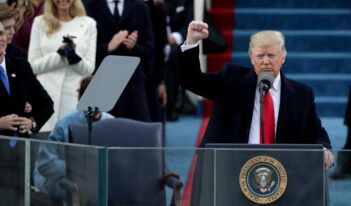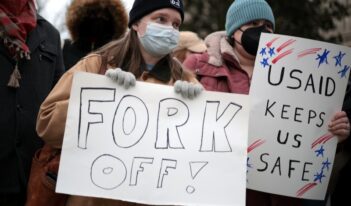
Scholar contends that the emergence of “integrative enforcement” shows a shifting locus of immigration policy.
Since even before the showdown over President Donald Trump’s policy of separating undocumented migrant parents and children at the border, immigration has served as a political fault line between Democrats and Republicans. And President Trump cemented his divisive position within the immigration debate with one of his first actions in office: his issuance of an executive order targeting so-called sanctuary cities—local jurisdictions that limit their cooperation with federal immigration enforcement officials.
Some commentators have argued that President Trump’s executive order is representative of a broader shift in national immigration policy towards the principles of exclusion and isolation. But according to a recent paper, the order may also signal a change in the way that immigration policy is formed and the level of government where it is made.
The paper’s author, Ming Hsu Chen of the University of Colorado Law School, argues that the executive order and the reaction to it reveal how the federal government is no longer the sole arbiter of immigration enforcement. Chen contends that, by pushing back against the exclusionary requirements of the executive order, institutions like school campuses and churches have introduced a new inclusive dynamic into immigration policy. Despite having no true legal authority over immigration enforcement, these groups have shown that they can still influence its direction.
President Trump intended that his executive order would increase enforcement against immigrants residing in the United States who either lack lawful immigration status or have engaged in some form of criminal activity. Among other things, the order directs U.S. Immigration and Customs Enforcement (ICE) to hire 10,000 additional immigration officers, creates a publicly available list of crimes committed by undocumented immigrants, and expands the ability of local law enforcement to assist in carrying out immigration laws. But the centerpiece of the order calls for the federal government to withhold funding for cities that fail to cooperate with federal immigration authorities.
Chen notes that the order has generated feelings of anxiety among immigrant populations throughout the United States. She observes that, in seeking to fulfill the aims of the order, ICE officials have raided neighborhoods across the country during check-ins of undocumented immigrants with stays of removal, “leaving noncitizens constantly worrying and wondering if they could be next.”
But Chen argues that, in direct response to the order, nonlegal bodies outside of the government’s traditional enforcement arms have shunned the administration’s exclusionary focus. They have in turn expressed a broader norm of community membership and institutional protection as an alternative to the federal government’s stance on immigration.
As an example of this behavior, Chen points to colleges’ opposition to the trend of increased immigration enforcement and the rescission of the Deferred Action for Childhood Arrivals (DACA) policy. She notes that campuses have generally tried to provide safe spaces for undocumented students by being uncooperative with law enforcement, and generating monetary, academic, psychological, and legal support for these students. Chen notes that, in response to the DACA rescission specifically, campuses have rallied around DACA recipients who face possible deportation by raising funds for pro bono legal assistance, creating DACA renewal clinics, and making urgent public appeals to Congress for judicial and legislative remedies.
Chen states that churches have similarly expressed opposition to expanding enforcement by providing “literal safe havens” for undocumented immigrants who are often members of mixed-status families that would be divided by deportation. Noting that churches have traditionally fallen into the category of sensitive areas that are less frequently subject to targeted enforcement, Chen describes a specific instance of a mother and her four children residing in a church for 86 days before receiving a stay of deportation in Colorado. She also observes that bolder churches are declaring their pro-sanctuary stance in defiance of the anti-harboring provisions in the Immigration and Nationality Act, while churches in less sympathetic jurisdictions are engaging in less direct civic disobedience, such as insisting on search warrants before letting ICE enter their premises.
Referring to these emerging sites of enforcement resistance as “sanctuary networks,” Chen argues that they often rely upon extralegal measures to exert their resistance, such as through the soft power of media, customer pressure, and political influence on legal decisionmakers. As a result, each instance of resistance is fairly limited in scope when viewed in isolation, she states. Examined together, however, “these public and private groups are forming a system that collaborates, formally in some contexts and informally in others, to collectively challenge the federal government’s claimed monopoly on setting immigration policy,” she writes.
Chen argues that, beyond the collective challenge to federal authority these sanctuary networks can bring, they embody a national norm of enforcement that focuses on the integration of immigrants as opposed to exclusion. When schools, churches, and other public and private groups resist the Trump Administration’s immigration policy, they are also advancing a new vision of community regulation that recognizes the contributions of immigrants—social, economic, and political—rather than fixating on their temporary or unlawful legal status.
Chen presented this paper at the 2018 Lara D. Gass Annual Symposium, titled President Trump’s Executive Orders and Emergent Issues in Immigration Enforcement, hosted by the Washington and Lee Law Review.



